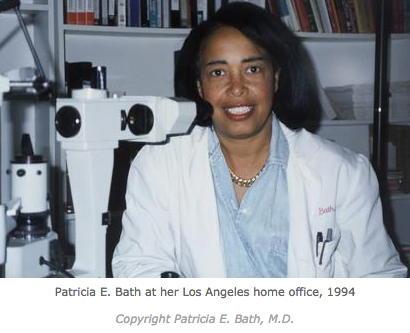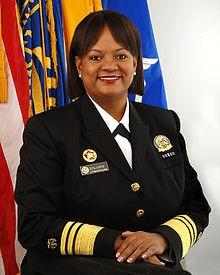Patricia Bath was the first African American to complete a residency in ophthalmology and the first African American female doctor to receive a medical patent. She invented the Laserphaco Probe for cataract treatment in 1986.
1942
2019
New York City, New York, USA
African American
1986-
Invented new device and technique for cataract surgery
1983-
First woman to chair an ophthalmology residency programme in the United States
1974-
First woman ophthalmologist to be appointed faculty of the University of California at Los Angeles School of Medicine Jules Stein Eye Institute
Patricia Bath was born in 1942 in Harlem, New York, the daughter of Rupert and Gladys Bath. Her father was an immigrant from Trinidad, a newspaper columnist, a merchant seaman and the first Black man to work for the New York City Subway as a motorman. Her father inspired her love for culture and encouraged her to explore different cultures. Her mother was descended from African slaves and Cherokee Native Americans. Throughout her childhood, Bath was often told by her parents to `always settle for less than her best’ and had been encouraged by their support of her education. Her mother, encouraging her dreams and love of science, had bought her first chemistry set. By the time she had reached high school, Bath was already a National Science Foundation scholar. This led to her cancer research earning a front page feature in the New York Times. Patricia and her brother attended Charles Evans Hughes High School where both students excelled in science and maths.
As a young intern shuttling between Harlem Hospital and Columbia University, Bath was quick to observe that at the eye clinic in Harlem half the patients were blind or visually impaired. She cofounded the American Institute for the Prevention of Blindness in 1970. Bath was the first Black surgeon at the UCLA Medical Centre and became the first woman on the faculty of the ophthalmology department of UCLA’s Jules Stein Eye Institute. Her work with cataract patients and related research in the 1980s led her to develop the Laserphaco Probe, which uses laser technology to remove cataracts. After five years of research and testing, she applied for a patent, which was granted in 1988. The device is now used to restore or improve vision to millions of patients around the world. She held five US patents and authored more than 100 papers.
Honours from Howard University College of Medicine in 1968
Awarded Edwin Watson Prize for excellence in Opthalmology
Her interest, experience, and research on cataracts lead to her invention of a new device and method to remove cataracts, the Laserphaco probe. When she first conceived of the device in 1981, her idea was more advanced than the technology available at the time. She is survived by her daughter Eraka Bath, her granddaughter Noa Raphaelle Bath Fortuit, and brother, Rupert Bath .
https://www.blackpast.org/african-american-history/bath-patricia-1942/#:~:text=Bath%20was%20born%20on%20November,Gladys%20Rupert%2C%20a%20domestic%20worker.
https://www.findagrave.com/memorial/199790271/patricia-era-bath https://www.biography.com/scientist/patricia-bath
https://cfmedicine.nlm.nih.gov/physicians/biography_26.html




